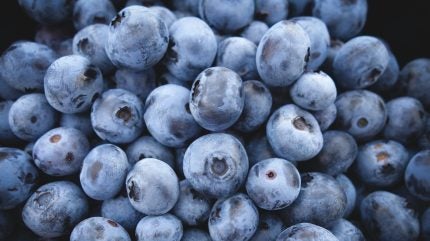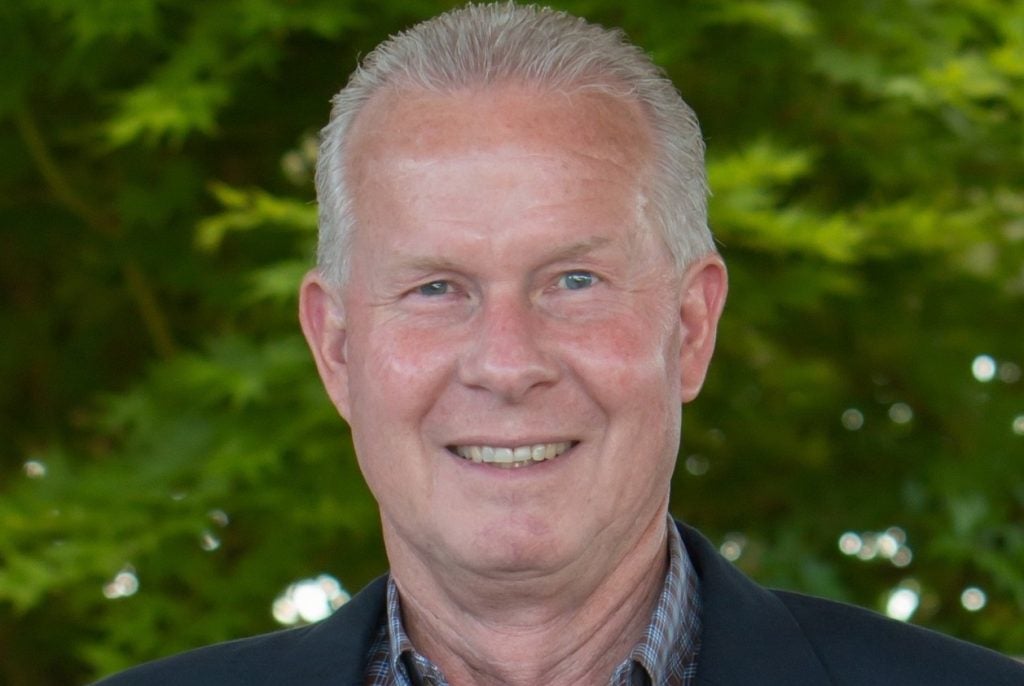
Frutura Produce is eyeing further acquisitions as the California-based grower seeks to focus around a core fresh fruit offering.
Berries, avocados, cherries, table grapes, mangoes and citrus fruits such as mandarins have been the defining feature of Frutura’s M&A strategy in the past five years, mainly centred on Latin America and the US.
Montana Fruits (Colombia), Sun Belle (US), Giddings Fruit (Chile), Subsole (Chile), Agricola Don Ricardo (Peru), Dayka & Hackett (US) and TerraFresh Organics (US) complete a timeline of deals back to 2021.
Some 80% of Frutura’s revenue is generated in North America – the US, Canada and Mexico – while Europe and Asia also fit into the customer base.
Frutura CEO and seasoned industry executive David Krause chats with Just Food’s Simon Harvey on the plans for the business.
Simon Harvey (SH): You joined Frutura as CEO in 2021?
David Krause (DK): I actually started before Frutura was even formed. I was working at a consultancy and we shaped the strategy from a blank piece of paper. We had a mix of a new strategy for the marketplace but also acquiring old businesses that had long histories and great management teams.

US Tariffs are shifting - will you react or anticipate?
Don’t let policy changes catch you off guard. Stay proactive with real-time data and expert analysis.
By GlobalDataSH: I ask the question because I wanted to see if you were involved in negotiating the acquisitions since 2021?
DK: I go back to before they were even contemplated. They were all very strategic, targeted pieces in the puzzle of this strategy. When you can build something from scratch like that and be the driver of the ship and the strategy, it’s a really unique and fun opportunity.
SH: Are there any fruits that Frutura isn’t in that it would like to be?
DK: We’ve set our eyes on being in a lane of six core crops because we like the growth potential, in other words, consumption is increasing. We know what we don’t want to be in – stable or declining categories.
Of those six, there is still work to be done in some of them, like avocados. I think we still have much more around the supply that we want to build out for that lane. Cherries are very exciting, stitching together as close to 52 weeks of supply.
There’s work to be done in the spaces that we’re in before we would contemplate adding anything new.
SH: Do you plan to build capabilities around those six?
DK: We have a pipeline of acquisitions that we’re discussing right now at various different stages, strategic adds. We did a deal in Colombia on avocados with a packer and we’re about to close on a land transaction in Colombia and we have a few others.
SH: What are your main considerations or criteria when it comes to M&A?
DK: It would be three things. One that it’s within the strategic framework that we’ve built and staying in that group of six lanes.
Two would be around how do we better serve our customers? That’s diversity of geography or supply that gets us to 52 weeks so we can take out the seasonality in the volatility of supply constraints. We think that’s a big element.
The third is how do we better distribute globally? We might look at acquisitions that would be better suited to satisfying our growth that we want to feed in the European market. That’s something that we’re looking at.
And whether we produce in the European continent for those markets to be closer to the marketplace. Those are the key filters that I would look at for any potential acquisitions.

SH: Coming back to cherries. I love cherries but here in the UK they are so expensive. Why is that?
DK: The challenge with cherries is it’s a crop that needs a unique climate. It blooms early, [it] can’t have frost. There are only certain parts of the world that they grow in and it’s very narrow in terms of the period of production.
We haven’t yet, as producers, figured out how to grow them in new places that would give us different timing, that would make the supply more abundant and therefore bring your price down. They also have significant perishability.
There are primarily two places that produce most of the cherries and that’s the Pacific Northwest – Oregon and Washington here in the US – and then Chile. Very little is produced elsewhere.
SH: There’s a lot of exotic fruits produced in Asia. Is that an area Frutura might be interested in expanding into?
DK: From a production standpoint, we’re very comfortable in the areas that we’re currently in. From a distribution standpoint, we’re working on how we get more of our products into the European marketplace. About 80% of Frutura’s total supply goes into the US, a market that we know and understand very well.
We think there’s a tremendous opportunity in building distribution of these great, high-quality fruits out of the LatAm-based countries in our production base. That’s one of the things that we’re working on.
SH: Could you be more specific on Europe distribution?
DK: We currently distribute a reasonable amount of volume in a partnership that we have in the UK but we also do business in Spain, France and Germany with some of the major retailers. It’s just much smaller in terms of total volume relative to the US market.
SH: Has Frutura considered entering vertical farming?
DK: It’s such an interesting space. I don’t see it being perfected yet. The crops that we grow are more permanent, crop-based, which don’t lend themselves as well to that versus vegetable production.
It makes more sense for leafy products or some of the vegetable products where you can grow very close to the consumption. But, when you’re talking about a tree or a grapevine, an avocado plant, these are not things that lend themselves to being indoors as much because of the space consumption, the per capital cost doesn’t balance out. I guess the simplest way to say it is: we’ll let somebody else figure that out. We have enough challenges overall.
SH: How has the fruit industry changed in the time you’ve been involved? We constantly hear about the impacts of climate change.
DK: Consolidation on the buyer side and consolidation on the production side. It continues to amaze me how much capital is coming in and consolidating production-based agriculture and the level of sophistication around that.
The end cause of climate change is that we are so much more focused today on water
Two – you mentioned climate change. I always think about the end cause of climate change is that we are so much more focused today on water – quality of water and availability of water – because without water we can’t grow the products that we need. Climate is sort of a cause and effect that really comes back to water.
We used to buy our properties in production based on the quality of the soil. In today’s world, we buy based on the availability and the quality of the water and we’re fiercely protective over that.
Climate change is a big factor in terms of how we grow our crops, where we grow our crops, but I think we’re doing a good job at trying to get better at that – the focus around sustainability.
SH: How is demand for fruit changing given the shifting dynamics around health among the different age groups?
DK: It’s more about the type of crop. There are, without question, those that are in tremendous favour and consumption patterns are growing wildly. An example, the berry space – blueberries, blackberries, raspberries and even strawberries to a lesser degree, are seeing consumption increases.
People are eating healthy. They continue to consume more and more, especially as we, as producers, do our job better. What I mean by that, take the table grape category. We’re delivering genetics now around varieties that eat so much better than the stuff we produced 20 years ago.
As long as we continue to do that, there are certain crops that are going to continue to see incredible growth, avocados, berries. The easy peel clementine or mandarin has exploded in terms of consumption. I think there’s lots of opportunities.
There’s some that are a little more stagnant than others. The banana and apple categories, they’ve been around for so long, they’re a little more steady. They don’t see the same kind of growth curves. But we think healthy eating is going to continue to play an important role.
SH: You didn’t want to talk about revenues but what about growth rates at Frutura?
DK: We’re not ones to share financial data but year over year we’re going to post 30% growth. Some of that comes from acquisitions and some of it comes from organic growth. For a production-based company like ours, you plant the plant and two or three years later you start to see the productivity.
Investments made in the past are now starting to come to fruition, so we have a lot of organic growth but we are also still acquiring some. We’re running at a pretty strong clip.
SH: Thinking of grapes for wine making and how long it takes to get the vines growing and producing, I imagine you’re always having to invest in land to keep up the production cycle?
DK: You’re right. The way I think we build success into our platform is we always look at it with the eye from the market and the customer. What does the customer want? What new variety, what timing of availability, what kind of a product? And then we work backwards and say, ‘Okay, we need x of these, so therefore we should find this land to plant, and we’ll have it available in the next two to three years.
It’s a constant game of chess, where you’re always thinking in your mind three to five years in advance.
SH: Is labour availability an issue?
DK: Frutura is not the largest platform in the globe but we employ north of 10,000 employees depending on the time of the year. The thing we focus on, to be candid, is we want to be the employer of choice. We treat them better, we pay them a little bit better and have benefits.
If you do the right thing for that employee base, you don’t eliminate that challenge, but you at least improve your chances of being successful.



